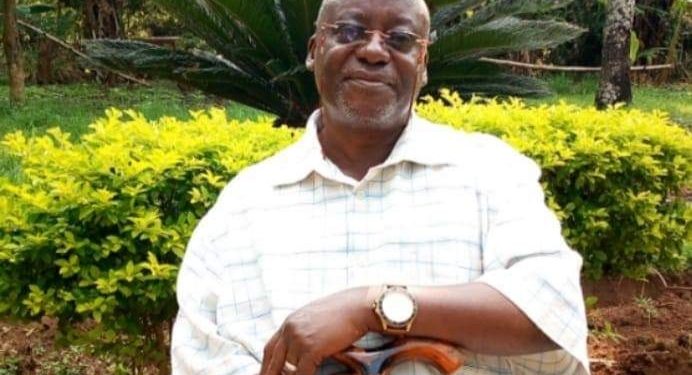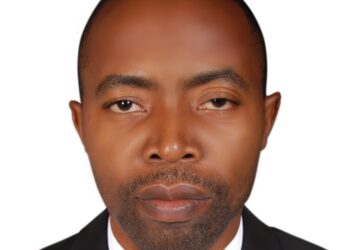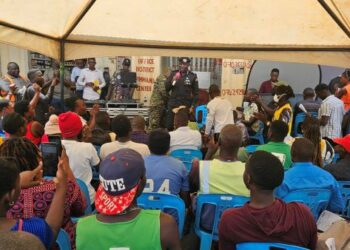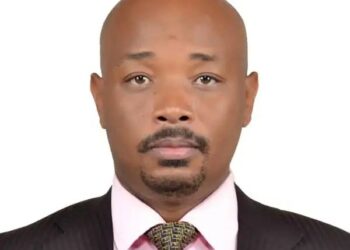When, in the late 19th Century, the British colonialists arrived in the area they first named British Protectorate of Uganda, then Commonwealth Realm of Uganda and finally Uganda, they found 15 nation states manifesting structurally and functionally, and mostly at peace with one another. These were: Acholi, Ankole, Buganda, Bugisu, Bukedi, Bunyoro, Busoga, Karamoja, Kigezi, Lango, Moyo, Sebei, Teso, Toro, West Nile.
By naming Uganda, the Commonwealth Realm of Uganda in 1962, the colonialists recognized that the country they were about to leave consisted of distinct nations with distinct indigenous groups that could as well be developed into a federated United States of Uganda. However, all along their governance mode was driven by an undeclared tool called “Divide and Rule”. They had no interest in forming and leaving behind a strong country of self-governing federal entities integrated under one unit called “United States of Uganda. They instead wanted an integrated East Africa, which they knew would serve their economic interests well. Their interests of imperial power, raw materials and continuous exploitation would only be served well into the future if they created, preserved and magnified divisions between the peoples they found when they first arrived. To them, a centralized system of government would serve their interests best. It worked for them for 70 years, and could continue to serve them well beyond their date of departure. So, for them it would be departure without really departing.
The colonialists, therefore, introduced centralized governance, not to benefit Ugandans as such, but themselves. When they introduced domestic economic production of sugarcane, coffee and cotton, and integrated it in the global markets, and a domestic education system, which later got integrated in the global education and communications system, it was not in the interest of the peoples they colonized. When they identified some academically and intellectually promising people and sent them to their country to study their the aimed at creating a well-informed civil service to serve their interests.
To make sure that social divisions occasioned by the education system they introduced worked in their interest, they reduced the nation states to tribal enclaves. The first people to benefit from the education system were children of chiefs or those who served chiefs and Kings. This meant that initially children of the poor and needy of the time were not beneficiaries. As a result, the gap between the well-to-do and the poor and needy widened. Actually simultaneously, the colonialists were preparing the ground for Uganda to be a huge labour reserve for the industrial sector they were developing in Kenya. Or else, they wanted cheap labour, in form of clerks, for their growing and developing administrative structure in the Protectorate.
Even if they found well-organized Kingdoms of Ankole, Buganda, Bunyoro and Toro and well-organized chiefdoms in Busoga, the colonialists plotted to reduce all nation states of their “protected” colonized area to mere tribes.
This was not surprising. In Britain, the word tribe had been used for a long time in the classification of animals, plants and some peoples in England, Scotland, Wales and Northern Ireland. It was easy to understand why animals and plants were referred to as tribes. Classification was not scientifically advanced. When it became advanced, reference to tribes of closely-related plant species and animals’ species was dropped. By the time I studied Zoology at the University of Dar-es-Salaam in Tanzania in the early 1970s, the word tribe was no longer applied in the classification of the biological world. However, the word had got entrenched during the colonial rule of Uganda and other parts of Africa as a social and political strategy to denigrate the colonized.
There were no tribes in Uganda when the colonialists arrived. The words tribe, tribal and tribalism were as alien to the indigenes as were the new imposing white rulers. As I said tribe was introduced as a social and political strategy to denigrate the nation states and create a social and political strategy of denigration of the nations.
A conglomerate of tribes was considerably much easier to manipulate than a one of nations. If there was resistance to the building of a mega nation, as did happen many times in the case of the nation of Buganda manipulated into the mega state of Uganda, power could cry out that it was tribalism, which was behind Baganda resistance rather than nationalism, which the colonialists were determined to destroy in their own interests.
Yahya Sseremba’s 2019 “The Making and Remaking of Native Tribes in Uganda’s Toro Kingdom” reveals that renaming nations, making native tribes and remaking tribes was a colonial project. Out of one nation of Toro, the colonialists created Bator, Bakono and Bamba.
President Tibuhaburwa has tried to repeat this feat especially in Buganda, thereby generating conflict in the Kingdom. He encouraged installation of hitherto non-existent “kings” to weaken Buganda. The Kayunga Crisis of 2009 in which some people died is said to have arisen from the NRM government’s support for the Banyala to break away from the Kingdom of Buganda. As late as October 2022. The Buganda Kingdom also accuses the NRM government of fermenting trouble in Kooki so that it breaks away. Even on 31st May 2010, the government mouthpiece, the New Vision, reported that the Baruli wanted the NRM government to organize a referendum so that they could break away from Buganda because, according to them, the Baganda grabbed their land, subjected them to forced labour in the early 1900s, and Baganda culture does not tolerate other cultures. Simultaneously the NRM government has severally bantustanised Uganda to enhance the electoral fortunes of its political candidates, not necessarily to bring social services to the people.
The truth was that the colonialists found a consternation of nations constituted by indigenous groups and woven out of four ethnic groups: Bantu, Nilotics, Hamites and Nilo-Hamites Except for the conflict between Banyoro and Baganda, which the colonialists initiated, the Protectorate area was generally peaceful. There were no major conflicts between the nations or the ethnic groups. There were no major conflicts between the various indigenous groups. Neither did inter-ethnic conflicts between the four ethnic groups exist. Inter-ethnic conflicts often arise over power, space and resources. Power was not concentrated in any of the ethnic groups, and so there was no tendency for any of them to try and dominate the others. This could explain why Mwanga of Buganda and Kabalega of Bunyoro could simultaneously seek refuge in Lango when British colonialism was consummating their Kingdoms.
I have seen an article by Crispus Nyombi and Ronald Kaddu titled “Ethnic Conflict in Uganda’s Political History”. It does not mention any conflicts before the British colonialists left. Indeed, they enjoyed peaceful reign because their Protectorate was free of ethnic conflicts. This reflected the harmony, tranquility and tolerance that had developed between the ethnic groups by the time the colonialists arrived.
So, when Nyombi and Kaddu wrote “Throughout Uganda’s political history, ethnicity has been a major factor behind murderous campaigns, social-economic exclusion and political control”, they should have noted that ethnicity did not play any role in the political conflicts during the colonial era. Even if the colonialists recruited Nubian elements to help them subdue the indigenous peoples militarily, no major conflicts developed among the four ethnic groups of the Protectorate.
Nyombi and Kaddu are not entirely right when they assert that “the divisive role of ethnicity in Uganda from the colonial era under the protectorate government, followed by Edward Mutesa’s regime, then the Milton Obote presidential era, the Idi Amin regime and finally the incumbent Yoweri Museveni regime”.
It is not easy to pinpoint instances of ethnic conflicts during the colonial era in Uganda. I would not characterize the political conflicts within the Uganda National Congress (UNC) that saw Ignatius Musaazi declining and Milton Obote rising in political stature as indicative of ethnic conflict in the party. Obote appealed to members across the board. Even when he was behind the formation of the Uganda Peoples Congress (UPC), he joined efforts with William Rwetsiba from Ankole. It is absurd if we regard the pluralistic dichotomy pitying Obote’s UPC against Ben Kiwanuka’s Democratic Party (DP) before independence as a case of ethnic conflict since Kiwanuka was from the nation of Buganda and Obote was from the nation of Lango. In any case, prior to independence on October 9 1962, Buganda rejected Ben Kiwanuka and joined hands with Apollo Milton Obote who depicted more nationalistic flavour than the former.
I can say with confidence that political ethnicity was a more serious threat to the unity of people who came to be called Ugandans than was tribalism, which failed to lead to animosities between the nations that the colonialists reduced to tribes as if they were equivalent to trees and animals of Great Britain. However, it makes sense if one says in their plot to sow the must seed of Divide and Rule, they laid ground for ethnicity to be central to the political dynamic of Uganda after independence. They impregnated the Army and Police mainly with non-Bantu ethnicities. Ethnicity became an effective neocolonial tool for dividing Uganda and preventing consensus on anything -security, law, education, environment, health, agriculture, etc. Most rulers of Uganda have been made ineffective by putting ethnicity at the centre of their rule while condemning innocent “tribalism” for failure to unite and develop Uganda and its people in any meaningful way.
Yes, Uganda’s greatest challenge at the moment is ethnicity; not ethnicity of the four ethnic groups of Uganda, but that of a small immigrant ethnic group, which captured power by the gun and has captured the State as well.
The group believes that because it took up arms against an elected government, which it believed stole the elections of 1980 in favour of Obote’s UPC, and won the war it started and stopped, it should have unlimited access to everything: political power, health, education, freedom, wealth, land, oil, gold, opportunity etc. It has over the decades made policies and laws, most of them obnoxious, to favour members of its ethnicity at the expense of the traditional ethnicity and indigenous groups of Uganda. It made a Uganda Constitution 1995, which puts is ethnic group as one of the indigenous groups of Uganda, places all power and authority in one person who, necessarily is one of their kind, and is struggling to ensure that the Presidency of Uganda is hereditary. It has reduced the once powerful traditional Kingdoms of Uganda to cultural institutions without political power, which is wrong because those institutions had political power, and within them the cultural and spiritual roles were played by specific institutions, which were complementary to the political role of the Kings. It is as if the political role of the Kings was captured and concentrated in the President, who now ticks like the all-powerful monarch of Uganda. This could be behind the political effort to make the Presidency of Uganda hereditary.
Forget tribal conflicts. It is ethnic conflicts, not necessarily political only, that Uganda must grace for. The war lines are already drawn. The current countrywide grabbing of land from settled communities by people connected to power has made virtually all Ugandans conclude that the land grabbers, almost universally, belong to the dominant immigrant nomadic pastoralist energy system. As they forcibly settle on land biologically, ecologically and culturally settled by communities directly connected to the land, the nomadic pastoralists are making themselves the new landowners and settlers, as the displaced become the new nomads in their own country.
Concurrently, because they have no biological, historical, ecological, cultural and environmental connections to the land they grab, they are the single most force destroying the ecosystems and environments of Uganda. In particular, they are destroying the once highly productive seven or eight bioecological systems on which the agriculture of the country depended. No wonder agricultural production has plummeted meteorically as dependence on borrowing from domestic and international money markets has risen supersonically, thereby collapsing the hope of a sustained and integrated economy, which the NR regime promised Ugandans in 1986.
Currently the nomadic pastoralists are armed and pointing all guns at the conquered and subdued communities of the four traditional ethnic groups of Uganda. Because all the traditional ethnic groups of Uganda are suffering similarly in terms of denials and dispossessions, they might develop a collective mind informing them that they have been conquered and occupied, and are becoming foreigners, domestic refugees and slaves in their own country, and their young generation, however educated, can no longer be gainfully employed in the country but as modern slaves in Arab countries.
They might resolve to recover their lost humanity at whatever cost to human life. When equal opportunity, freedom and justice disappear, the victims tend to come together when they identify universally who the enemy is. The challenge always, however, creating leaders who ungreedy, unselfish citizen leaders ready to sacrifice for the whole rather than themselves, members of their family, extended family, indigenous group or ethnicity.
For God and My Country.
Do you have a story in your community or an opinion to share with us: Email us at editorial@watchdoguganda.com













